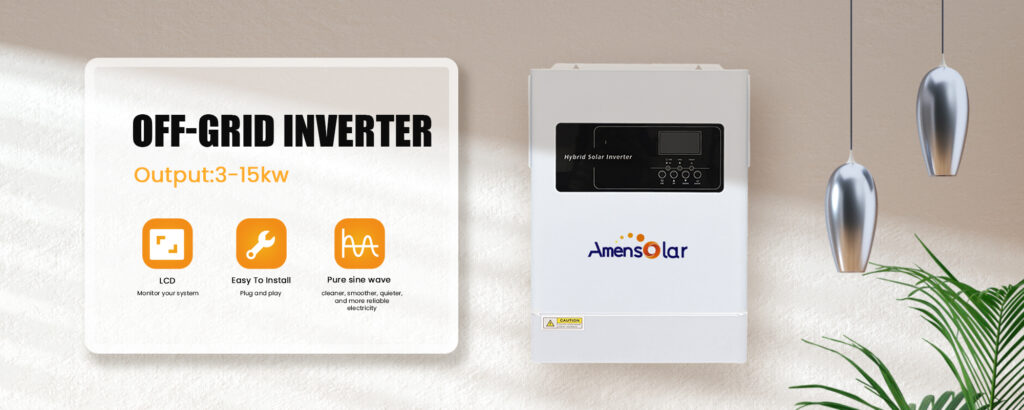In photovoltaic off-grid systems, the power of the off-grid inverter is generally determined based on the user’s load type and power.
Loads are classified according to their impedance properties: resistive loads, inductive loads, and capacitive loads. Resistive load: A load with no phase difference between current and voltage is a resistive load, such as rice cookers, light bulbs, soldering irons, etc. Inductive load: The load when the current lags the voltage by one phase difference is an inductive load, such as washing machines, air conditioners, refrigerators, water pumps, range hoods and other loads with electric motors and transformers, relays, compressors, etc. Capacitive load: A load whose current leads the voltage by one phase difference is a capacitive load, such as compensation capacitors, switching power supplies used in computers, TVs, etc. at home. The starting power of inductive loads such as motors is 5-7 times the rated power. When calculating the power of the inverter, the starting power of these loads must be taken into account.
If the load is an elevator or the like, it cannot be directly connected to the output end of the inverter, because when the elevator descends, the motor reverses, which will generate a counter electromotive force that will damage the inverter when it enters the inverter. If an off-grid system must be used, it is recommended to add a frequency converter between the inverter and the elevator motor.
If the photovoltaic system is only used for water pumping and a water tower can be built, it is recommended to use a photovoltaic water pumping inverter, which can save costs. For example, a 2P water pump. If an ordinary inverter is used, an off-grid inverter of more than 5kW is required. To drive, a battery of 200AH or above is required, and the total cost exceeds 10,000 yuan. However, if a Yangshui variable frequency inverter is used, it only requires 2kW and the price is less than 3,000 yuan.

The waveforms of inverters are mainly divided into two categories, one is sine wave inverter and the other is modified wave inverter. The modified sine wave inverter uses PWM pulse width modulation to generate modified wave output. Due to the harmonic distortion of about 20%, it cannot carry inductive loads such as air conditioners, but it can carry resistive loads such as lights. The modified sine wave inverter uses a non-isolated coupling circuit, which has simple components and high efficiency. The pure sine wave inverter adopts an isolated coupling circuit design, which is more complex and costly. It can be connected to any common electrical equipment (including TVs, LCD monitors, etc., especially inductive loads such as refrigerators) without interference.
Inverters are divided into high-frequency machines and power-frequency machines according to isolation. There is a 50Hz power-frequency isolation transformer behind the inverter, which is called a power-frequency inverter. High-frequency switching technology is used to use high-frequency switching components or high-frequency isolation. The transformer replaces the power frequency transformer in the inverter and is called a high-frequency inverter. The advantages of power frequency inverters are stable and reliable power components, strong overload capacity and impact resistance. The disadvantages are low efficiency, heavy weight and high price. There are two types of high-frequency inverters: high-frequency isolation and non-isolation. The advantages are small size, high efficiency, and low price. The disadvantage is slightly lower impact resistance. If the load is an inductive load such as a motor with high impact, but does not move frequently, it is recommended to choose a power frequency inverter. If the load is a resistive load with less impact and needs to be moved frequently, it is recommended to choose a high-frequency inverter.
The output power of the inverter is greater than the power of the load. For monitoring stations, communication stations and other places with strict requirements, the output power is the sum of all load powers. But for ordinary poor families, considering that it is impossible to turn on all loads at the same time, in order to save costs, the sum of load power can be multiplied by a coefficient of 0.7-0.9.
发表回复